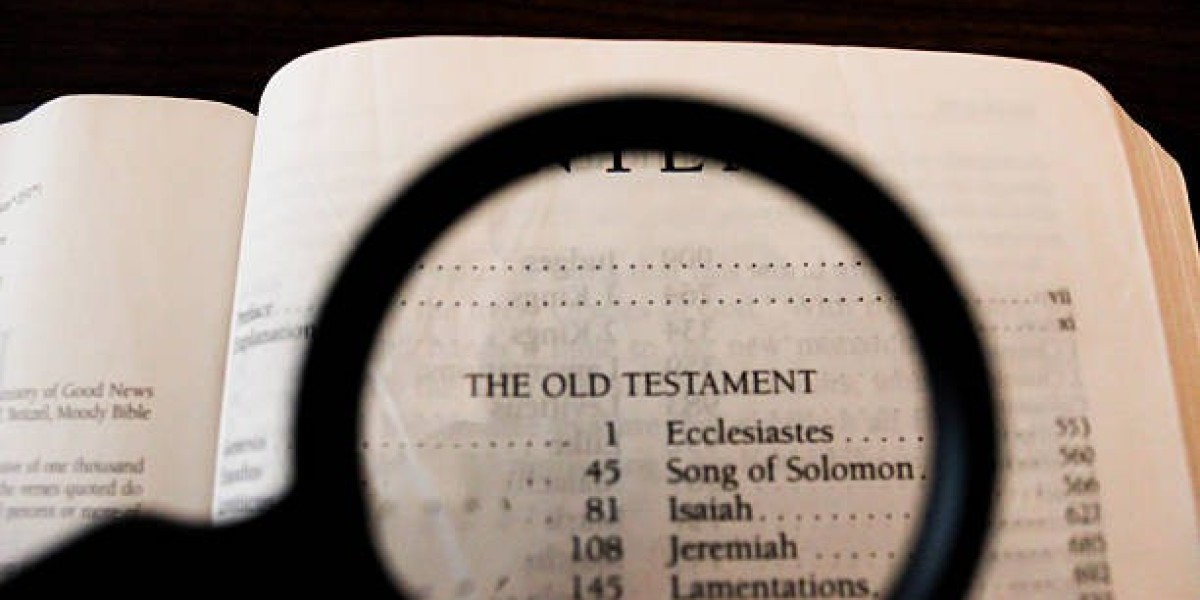The Old Testament Books form the heart of Jewish worship, theology, and daily life. They are more than ancient writings; they are living texts that define identity, faith, and tradition. From the Torah read aloud in the synagogue to the poetic verses of the Psalms sung in prayer, these books continue to shape the rhythm of Jewish spirituality.
Jewish worship is rooted in the relationship between God and His people, a relationship revealed and preserved through Scripture. Every aspect of Jewish liturgy, ritual, and festival finds its foundation in the Old Testament Books. Understanding their role reveals how sacred texts sustain faith and community across generations.
The Structure of the Hebrew Scriptures
The Threefold Division
The Old Testament Books in the Jewish tradition are organized into three main sections known collectively as the Tanakh. The term Tanakh is an acronym derived from the names of these three parts: Torah (Law), Nevi’im (Prophets), and Ketuvim (Writings).
The Torah, or the first five books of Moses, serves as the foundation. It includes Genesis, Exodus, Leviticus, Numbers, and Deuteronomy. These books contain the laws, covenants, and origins of the Jewish people. The Nevi’im includes the historical and prophetic writings, which guide and warn Israel about their covenant responsibilities. The Ketuvim includes poetry, wisdom literature, and historical reflections, such as the Psalms, Proverbs, and Chronicles.
Each division contributes uniquely to Jewish worship. The Torah defines ritual law. The Prophets inspire repentance and moral reflection. The Writings offer songs, prayers, and meditations that fill worship with emotion and beauty.
The Centrality of the Torah
In Jewish life, the Torah is the most sacred part of the Old Testament Books. It is often called “the Teaching” because it provides guidance for both religious and ethical living. The Torah scroll is kept in the ark of every synagogue, usually covered with an ornate mantle and adorned with silver ornaments.
During worship, portions of the Torah are read publicly every week. This act of reading is not merely for instruction but also for devotion. Each reading connects the congregation to centuries of tradition and reminds them of their covenant with God.
The Role of Scripture in Synagogue Worship
The Reading Cycle
One of the most significant ways the Old Testament Books shape Jewish worship is through the cycle of readings in the synagogue. The Jewish year is divided into sections that correspond to the portions of the Torah. Each week, a portion called a parashah is read aloud. Over the course of a year, the entire Torah is completed, allowing the community to engage continually with God’s Word.
Along with the Torah reading, a portion from the Prophets, known as the Haftarah, is also read. The Haftarah readings often relate thematically to the Torah portion of the week, creating a link between law, history, and moral teaching.
This rhythm of public reading keeps the words of the Old Testament Books alive. It ensures that every generation hears, studies, and internalizes the same divine truths.
The Psalms in Prayer
The Book of Psalms, part of the Ketuvim, holds a unique place in Jewish worship. These poetic songs are used daily in prayer, both individually and collectively. Many of the Psalms express praise, thanksgiving, lament, and trust in God. Their emotional depth allows worshipers to approach God with honesty and reverence.
Psalms such as “The Lord is my shepherd” (Psalm 23) or “I lift up my eyes to the hills” (Psalm 121) are recited in times of need, gratitude, or reflection. They connect the heart of the believer to the divine presence, transcending time and circumstance.
The enduring use of Psalms shows how the Old Testament Books provide not only law and history but also the language of devotion.
Festivals and Sacred Remembrance
Passover and the Exodus Narrative
Jewish festivals find their roots in the Old Testament Books, particularly in the Torah. Passover (Pesach), one of the most important feasts, commemorates the Exodus from Egypt as described in the Book of Exodus.
During the festival, families gather to read the Haggadah, which recounts the story of liberation. The reading is more than historical reflection; it is worshipful remembrance. Each participant experiences the deliverance of the Israelites as if it were their own.
The Old Testament Books transform memory into ritual. They make history sacred by turning it into a yearly act of thanksgiving and identity renewal.
The Festival of Weeks and the Giving of the Law
The Feast of Weeks (Shavuot) is another example of Scripture shaping worship. According to tradition, this festival marks the giving of the Law at Mount Sinai, as recorded in the Book of Exodus and the Book of Deuteronomy.
During Shavuot, passages from the Torah and the Book of Ruth are read in the synagogue. The Book of Ruth emphasizes loyalty, kindness, and the universality of divine grace. Its inclusion connects the gift of the Law with the lived experience of faith and love.
By integrating readings from different Old Testament Books, Jewish worship links the covenant, the commandments, and the human heart into one spiritual expression.
Prophets and the Call to Righteousness
The Prophetic Voice in Worship
The Nevi’im, or prophetic books, play a powerful role in Jewish liturgy and reflection. Prophets like Isaiah, Jeremiah, and Ezekiel addressed the people during times of moral and spiritual crisis. Their words often appear in the Haftarah readings, offering warnings, hope, and visions of redemption.
In worship, these readings remind the community of God’s justice and mercy. The prophets challenge worshipers not only to perform rituals but also to live ethically. They demand sincerity, compassion, and faithfulness to the covenant.
For instance, Isaiah’s words—“Seek justice, relieve the oppressed, judge the fatherless, plead for the widow”—are read as moral calls that resonate deeply within the conscience of every believer.
The Prophets in Modern Worship
In modern Jewish practice, prophetic messages continue to inspire social responsibility. Many Jewish prayers and sermons draw from prophetic texts to emphasize peace, justice, and renewal.
Thus, the prophetic books maintain their living power within worship. They remind worshipers that faith is not confined to ritual but extends into action and ethics. Through the Old Testament Books, Jewish worship becomes a dynamic expression of both devotion and responsibility.
The Wisdom Literature and Reflection
Proverbs and Ecclesiastes
The Ketuvim includes wisdom books such as Proverbs and Ecclesiastes. These writings teach moral insight, humility, and reverence for God. Their verses are frequently quoted in worship, study, and personal meditation.
The Book of Proverbs teaches practical wisdom for daily living. It links righteousness with wisdom, reminding believers that understanding begins with the fear of the Lord. The Book of Ecclesiastes takes a more reflective tone, pondering the meaning of life, mortality, and divine purpose.
Both books enrich Jewish worship by encouraging thoughtfulness and balance. They invite worshipers to seek divine wisdom in everyday choices.
The Role of the Book of Job
The Book of Job, also part of the Ketuvim, explores suffering and divine justice. It appears in Jewish readings during times of mourning or personal trial. Job’s struggle with faith and endurance mirrors the human experience of questioning and hope.
Through Job’s story, the Old Testament Books give worshipers a way to express sorrow, doubt, and eventual trust in God’s plan. This emotional honesty strengthens worship by allowing the full range of human feeling within sacred space.
The Sacred Language and Transmission
Hebrew as the Language of Worship
The Old Testament Books were written primarily in Hebrew, with some parts in Aramaic. This ancient language remains central to Jewish prayer and study. Reading the text in its original language connects worshipers to the first revelation and preserves the authenticity of Scripture.
In synagogues, even when translations are provided, the Hebrew text is recited aloud. The rhythm, sound, and sacred cadence of Hebrew prayers create continuity across generations.
The Role of Study in Worship
Jewish worship is not limited to ritual performance; it also includes study. Reading and interpreting the Old Testament Books is itself an act of devotion. Rabbinic traditions encourage ongoing dialogue with the text through commentary, debate, and reflection.
This focus on study ensures that worship remains intellectually and spiritually alive. Every reading is an opportunity for new understanding and renewed faith.
Conclusion
The Old Testament Books are the lifeblood of Jewish worship practices. They provide structure, meaning, and continuity from ancient times to the present. Through public reading, prayer, and study, these texts sustain the relationship between God and His people.
In the synagogue, the Torah commands reverence. The Prophets demand justice. The Writings inspire praise and wisdom. Together, they form a complete spiritual vision that guides life and worship.
Every festival, every prayer, and every moral act reflects the influence of Scripture. The Old Testament Books remind worshipers that faith is not only a belief but a lived experience shaped by divine words.
From Mount Sinai to the modern synagogue, these sacred texts continue to speak. They call each generation to remember, to act justly, and to love God with heart, soul, and mind. Through them, Jewish worship remains an eternal conversation between humanity and the divine.



